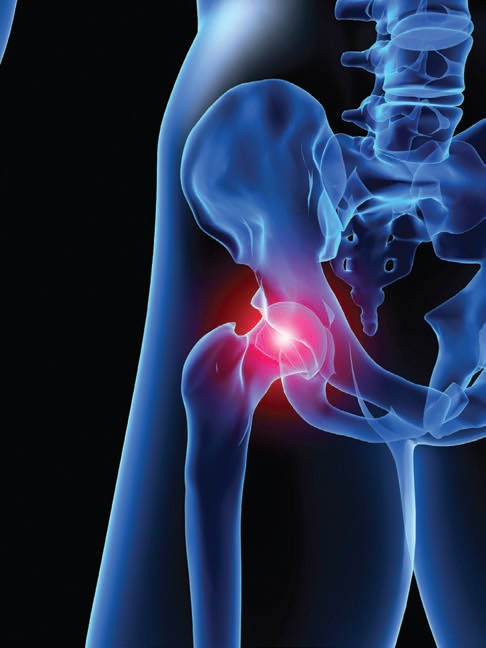Tribological problems with medical implants
R. David Whitby | TLT Worldwide September 2011
Inadequate wear resistance of the friction joints limits stability and durability.

Medical experts warn that people can suffer serious health problems due to faulty or badly designed implants.
www.canstockphoto.com
Every year more than one million people have a joint prosthesis implanted such as artificial hips or knees. In the United States, 25 million people rely on implanted medical devices, while in the UK around 40,000 hips and 18,000 knees are replaced annually. These figures are likely to increase substantially in a few years, as advances in medical science are enabling people to live longer.
The vast majority of medical implants function correctly for many years, but recently some designs and metallurgies have caused problems. The tribology of implanted knees, hips, ankles, shoulders and elbows poses particular challenges for engineers and clinicians, and it is clear that the subject has considerable scope for further development.
The main difference between a natural joint and an artificial one is the fundamentally different lubrication mechanism. The key role in joint lubrication is played by the cartilage, which is both antifrictional and functions as a reservoir for the body’s aqueous lubricant—synovial fluid. Artificial joints do not have such facilities. Investigation of prosthetic implants that have had to be removed and replaced indicates that the main problem limiting their stability and durability is inadequate wear resistance of the friction joints.
Medical experts have warned that thousands of people are suffering serious health problems due to faulty or badly designed implants. Several failing or inadequate devices remain available for doctors to use in operations despite manufacturers being aware of their problems. In 2009 the UK Medicines and Healthcare Products Regulatory Agency, which is responsible for monitoring medical equipment, received more than 9,000 reports of adverse incidents involving medical devices.
In the U.S., many cases relating to DePuy hip implants have been brought to the attention of medical malpractice lawyers. The DePuy device was a metal-on-metal design. Over 93,000 patients had the implant installed before the dangers were discovered. The joint deteriorated far too quickly, releasing metal particles into the patients’ bloodstreams. Many of the implants needed premature replacement. DePuy kept the device on the market until 2010 despite repeated serious criticism by doctors from 2007 onward. DePuy said the device was tested for strength and wear and met all U.S. and EU standards. The problems, DePuy maintained, were caused by inexperienced surgeons implanting the devices in unsuitable patients.
The DePuy problems have led to closer scrutiny of the FDA-approval process. Medical products can be approved in a less demanding process known as the 510(k) exemption. This allows a product to be approved if it is substantially similar to one already marketed. However, a large majority of products ultimately recalled for their danger are approved through this backdoor method. Of the 113 devices recalled in the U.S. during the last four years, 80 of them were granted 510(k) exemption.
This year a similar problem occurred in the UK when
The British Medical Journal claimed that up to half of ASR hip replacements shed metal, causing intense pain for patients. The ASR device was also a metal-on-metal design. Investigations showed these were wearing out far too quickly. A number of orthopaedic surgeons have stopped using ASR hips, noting that those designs of hip and knee implants that have PTFE coatings between the metal components provide very satisfactory clinical results.
The BMJ has criticized manufacturers for failing to monitor the safety of these devices adequately and European regulators for not looking out for the patients’ interests properly. It says regulation is not “fit for purpose.”
Unlike kettle and toaster manufacturers, implant-producing companies are not necessarily held financially responsible when their products don’t last as long as advertised. This is another example of the need for tribologists and clinicians to work closely for the ultimate benefit of patients.
 David Whitby is chief executive of Pathmaster Marketing Ltd. in Surrey, England. You can reach him at pathmaster@dial.pipex.com
David Whitby is chief executive of Pathmaster Marketing Ltd. in Surrey, England. You can reach him at pathmaster@dial.pipex.com.